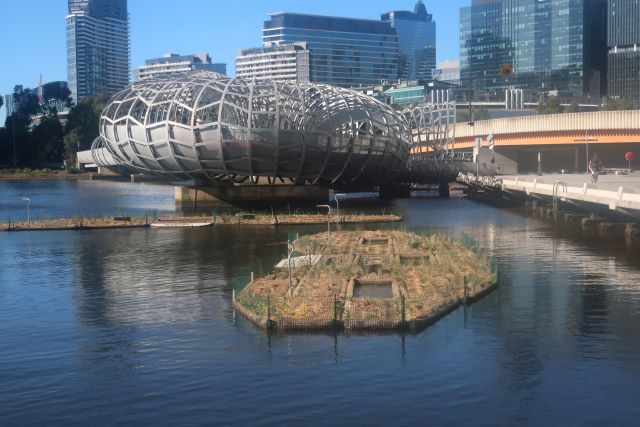
Bringing new life to the Yarra River in Docklands
Floating wetlands were installed in Docklands in December – at Yarra’s Edge and at Library at the Dock.
The wetlands, designed by Wetland and Ecological Treatment Systems (WETS), were assembled at nearby Victoria Harbour and towed to their final mooring positions.
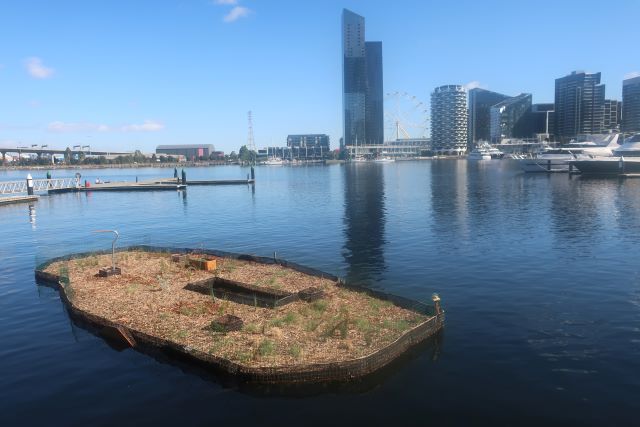
The plants, chosen for the brackish environment as the River is tidal here, have already begun to grow. Within days of their installation there were signs that rakali, the native water rat, had visited.
The wetlands are firmly anchored with tram wheels so they can move up and down with the tide but not float away down the Bay or be dislodged by flooding.
The island wetlands include bird friendly features: perches, ramps and basking platforms.
The floating wetlands are a trial of an action identified in the City of Melbourne’s Yarra River Birrarung strategy. The vision that leads the Strategy reads, begins
The Yarra River, Birrarung, will be an inspiring public waterfront that celebrates the rich Aboriginal culture and offers a green sanctuary, loved by Melbournians.
Evoking the richness of the pre-contact landscape and enhancing the ecological
values, the River immerses people in nature. The Yarra River, Birrarung, is
restored as a healthy water landscape experience.
The constructed wetlands are made possible by a $700,000 grant from the Victorian Government. They are an early example of actions identified in Burndap Birrarung burndap umarkoo – the Yarra Strategic Plan. Monitoring and evaluation of the performance of the wetlands will be critical to see if they can be deployed in other quiet places on the River as part of the City’s Greenline project for the north bank of the River.
Engagement with nature is at the forefront of the City’s plans to embrace nature in the city. The wetlands are close enough to the promenade but far enough away for them not to be disturbed by dogs. People are already taking an active interest in how birds are interacting with the wetlands – ducks attending to their feathers on the ramps, swans cruising past and checking them out, the delight of ducklings. Perhaps, in time, the floating wetland will attract as many photographers as the nearby Webb Bridge.
Barely 250 m from the wetland at Yarra’s Edge is a Bandalong litter trap. It’s a floating exhibit of the single use plastics banned by the Victorian Government on the 1st February: drinking straws, cutlery, plates, cotton bud sticks, polystyrene food and drink containers.
Single use plastics make up a third of litter in the environment. They are difficult to collect and recycle being widely dispersed once discarded. Single use is a wanton waste of resources – used only once when there are alternatives that can be used again and again. Not to mention the harm to marine life.
The litter traps’ design seems to suit the little pied cormorants who are often seen perched with their wings spread to dry. Last year, I saw this Australian Darter using a litter trap for the same purpose and I wished we could offer these waterbirds a better place to perch.
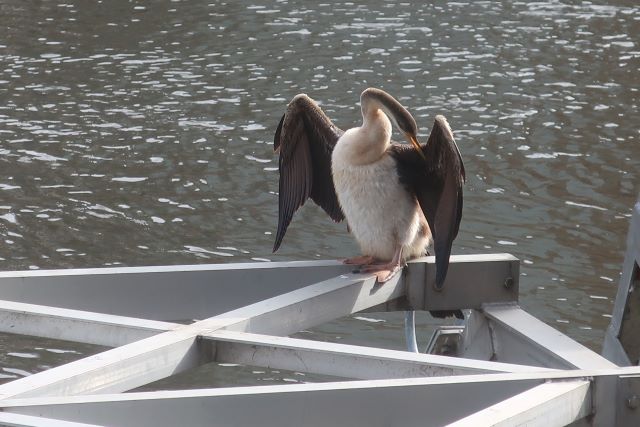
On Saturday 4 February, 3207 Beach Patrol will meet for their monthly beach clean at Lagoon Pier at 9 am. After each clean the litter is weighed and sorted before being entered on the Litter Stopper app. Now the data is also feeding into the state government’s LitterWatch portal to enable tracking of littered plastic trends over time, and to monitor the effect of the single use plastics ban.
The results from the February beach clean will form an important baseline for comparison with this time next year to see whether single use plastic ban has been effective.
Back in 2013, swan G10 made a nest on the north side of the River just opposite Yarra’s Edge. Exposed and vulnerable, sitting on a nest of mixed plastics and natural materials, I was filled with sadness that this was all we could offer these magnificent birds. Might swans choose to nest on one of these wetlands later this year?
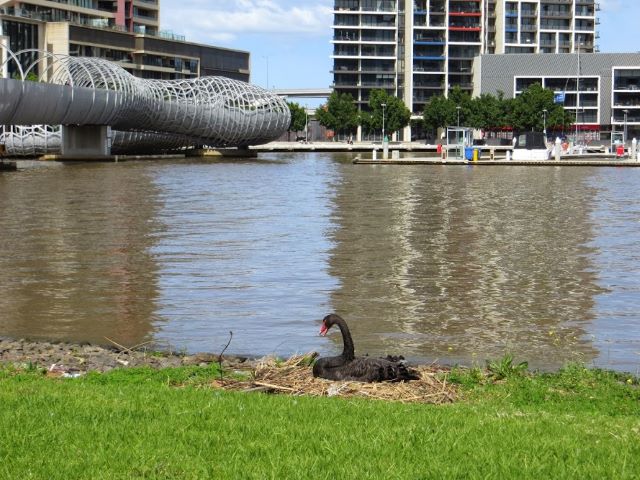
Just before Christmas, the protective nets were taken off the chain of ponds at the Yalukit Willam Nature Reserve.
Last week, Melbourne Water’s contractors took the first chunk of concrete out of the concrete lined Moonee Ponds Creek as the first step towards naturalising that creek.
These actions all contribute towards wetland restoration, the theme of this year’s World Wetlands Day1. Wetlands are land areas that are saturated or flooded with water either permanently or seasonally and include marshes, lakes, rivers, floodplains and swamps, saltmarshes, estuaries, mangroves and lagoons. Wetlands are one of the most threatened of the world’s ecosystems.
Since many of the places explored on Port Places: Fishermans Bend, Elwood and parts of Port Melbourne were once wetlands, these acts of wetland restoration are especially significant.
These stories sit well with the byline of Revive, the national cultural policy launched this week – ‘a place for every story and a story for every place’.
1World Wetlands Day, 2 February, marks the signing of the Ramsar Convention in 1971.
City of Melbourne Yarra River – Birrarung Strategy
3207 Beach Patrol welcome volunteers at their monthly cleans from 9.00 to 10.00 am on the first Saturday of each month. This month at Lagoon Pier.
Sightings from the floating wetlands can be reported on the iNaturalist app.

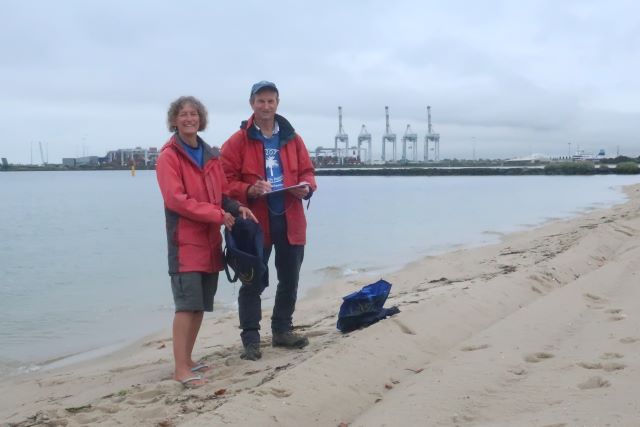
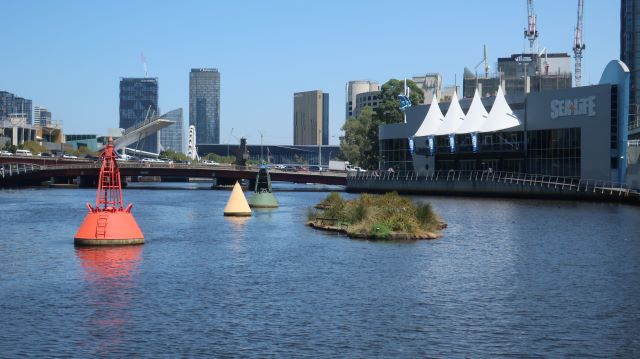
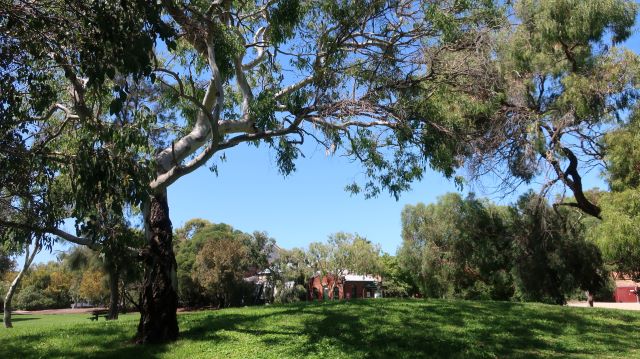
John
Interesting to hear , or read, Janet that the Native Water Rat, the Raki, has visited the Floating Wetland in the Docklands. I gather it had left some of its Debris on site.